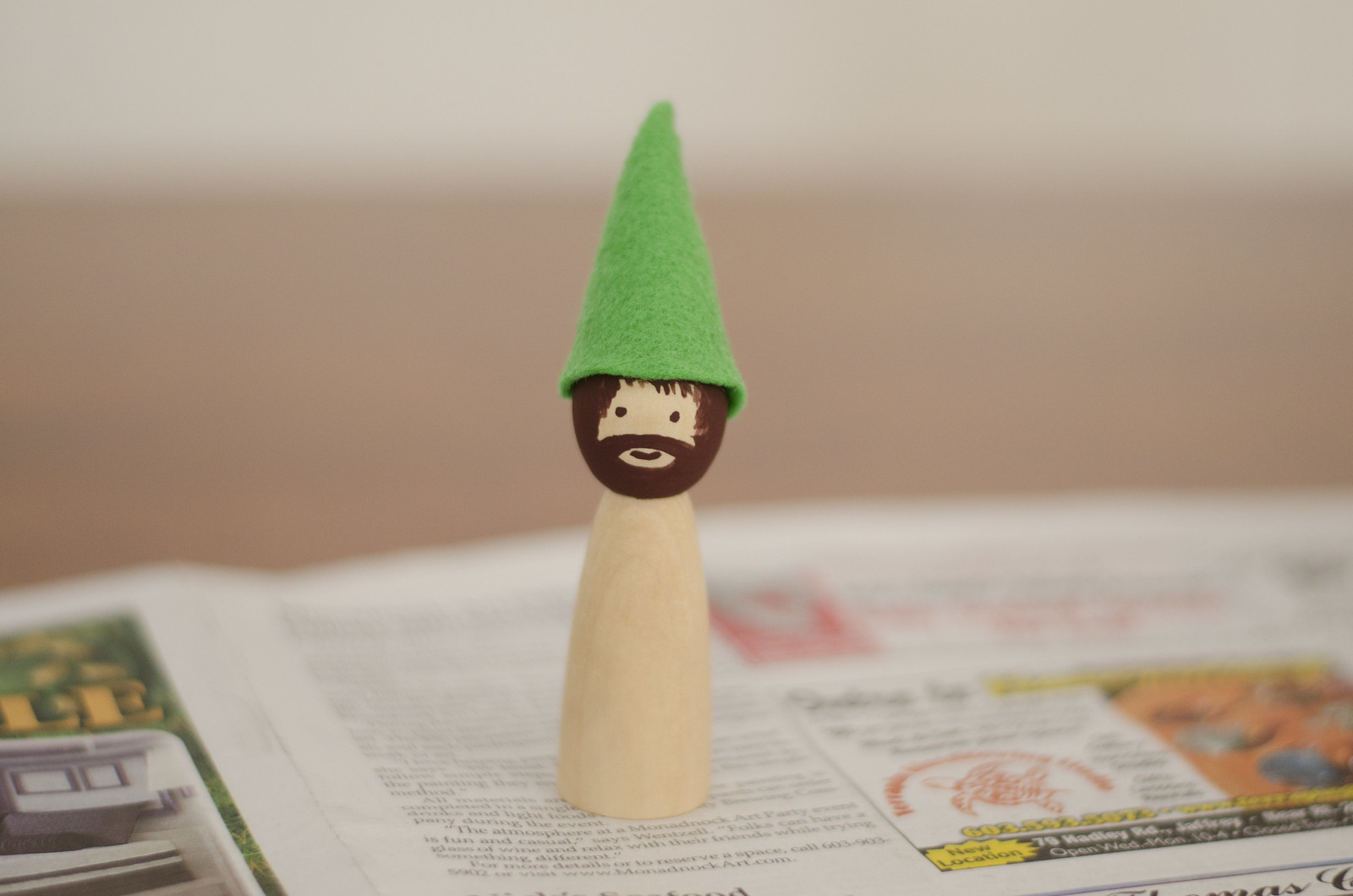To print a PDF of this tutorial, click here
To print the Basic Peg Doll Pattern, click here
Step 1: Get all of your materials in order. For this activity you will need wooden peg dolls that are 3″ tall and 0.75″ in diameter at the base. I buy mine at Michaels craft store for a couple of dollars per pack of two. You will also need acrylic craft paint and a small-tip paintbrush to make the face and hair; felt and embroidery floss in your choice of colors; a sewing needle & scissors that can cut felt; pipe cleaners (any color is fine); round beads that are approximately +/- 0.5 cm in diameter; and craft glue. If you haven’t already done so, please download and print out my “Basic Peg Doll Pattern”
Step 2: Paint the hair, eyes, mouth, and cheeks (or beard!) onto your peg doll, and allow to dry completely.
Step 3: Cut out your pattern pieces, and then use them to cut out your felt pieces in whatever colors you choose. You will need one hat and two tunics (front and back of final garment). I usually pin the paper to the felt so that I don’t have to worry about it sliding around. If you’re using a peg doll with a straight bottom, you don’t need to make any adjustments. If your peg doll has more of an a-line or bell shape on the bottom, you will want to make the bottom half of the tunic pattern just a bit wide and longer. While doing this tutorial, I realized that the pattern I created was just a bit too tight for the bell shaped dolls. I was able to sew it up, but the end result was quite form-fitting!
Step 4: Begin stitching up the seam of your doll’s hat. To hide the knot in your thread, start by poking your needle from the inside of one straight side to the outside, and then loop around to the outside of the other straight side and go back through the same hole (or approximately the same location), sewing through both layers of felt.
Step 5: Using the same stitching method (sewing through both layers of felt) sew all the way up to the tip of the hat.
Step 6: When you’ve made it all the way to the top, poke your needle down through the top and pull it through so that you can knot the thread and hide it in the hat (which will be glued to the doll’s head so the inside will never show).
Voila! A hat! But, I think he needs some clothing!
Step 7: [Note: Some embroidery or embellishments are difficult to do once the tunic is sewn onto the doll — I recommend adding decorative elements prior to stitching the two sides together, although you shouldn’t panic if you forget!] Taking your two copies of the tunic piece, place a small length of pipe cleaner between them (you can leave quite a bit sticking out the ends and trim it later). Put the peg doll between the two pieces of felt, and on top of the pipe cleaner, facing up. Begin stitching in the same manner as the hat, starting to the right of the neck.
Step 8: Stitch all the way around, leaving an opening for the head and arms (pipe cleaners). When you’re at the bottom of the tunic you can either stop and tie up and then start again on the other side, or you can stitch all the way around the bottom (not attaching the two halves together, but sewing around the edge as a decorative element).
Step 9: There you have it, a complete peg doll gnome. This is just the most basic doll or gnome you can make, but the sky’s the limit! Experiment with different types of hats and clothing — you can even use acorn caps for hats! Try embroidering little pictures of decorations, or glue/sew bits of felt on to create an image. This project is virtually impossible to really “screw up” and the materials are so inexpensive that you can always start over if you don’t like how the doll turns out (that doesn’t usually happen to me because I just keep tweaking the design until I like what I see). Below is my final version of this peg doll, which I turned into St. Patrick for an upcoming holiday. I made him a cloak, a bishop’s cap, and a crook — it’s amazing how these little elements make such a huge difference in the final product.
You can see more of the peg dolls I’ve made on my Season Table page.











